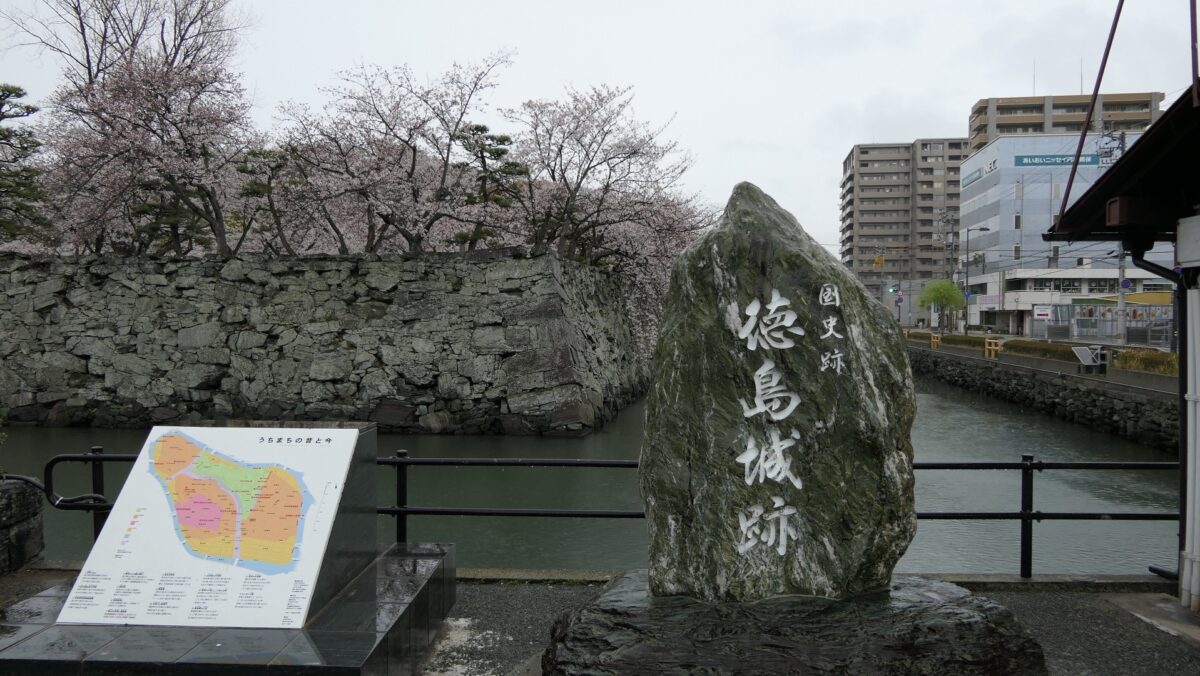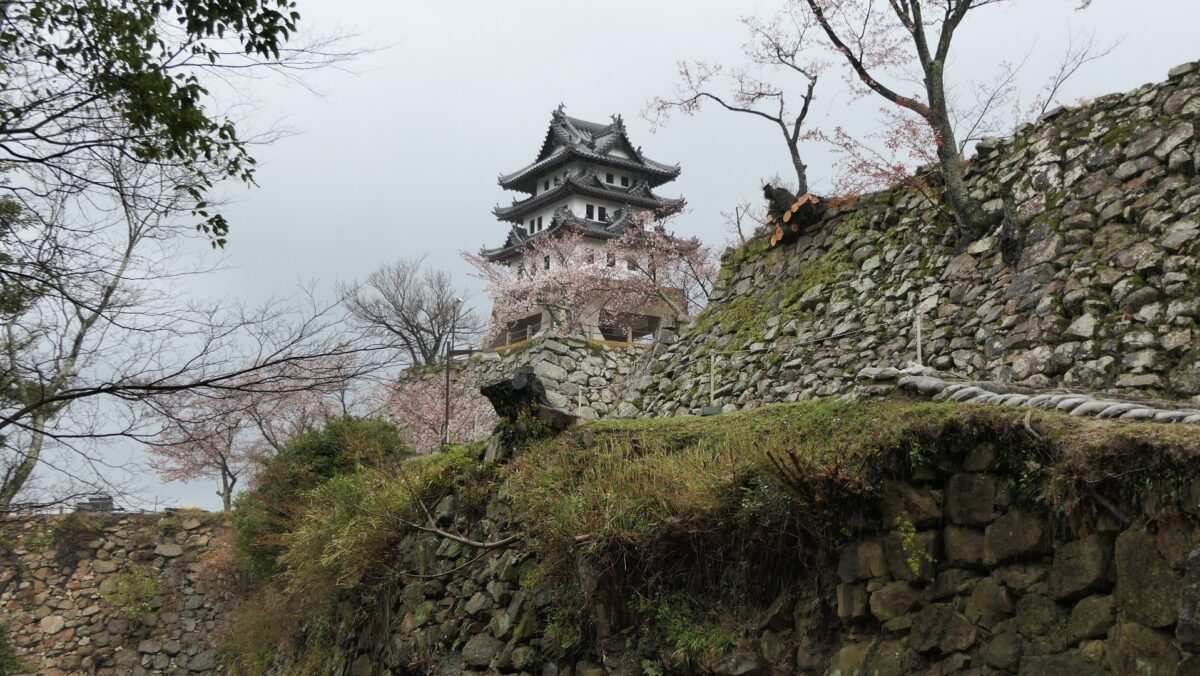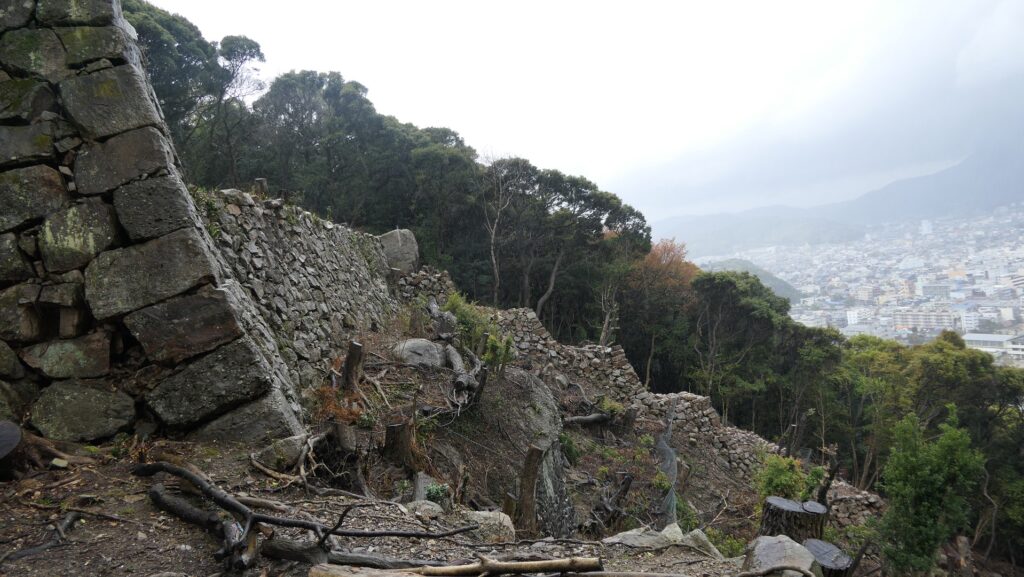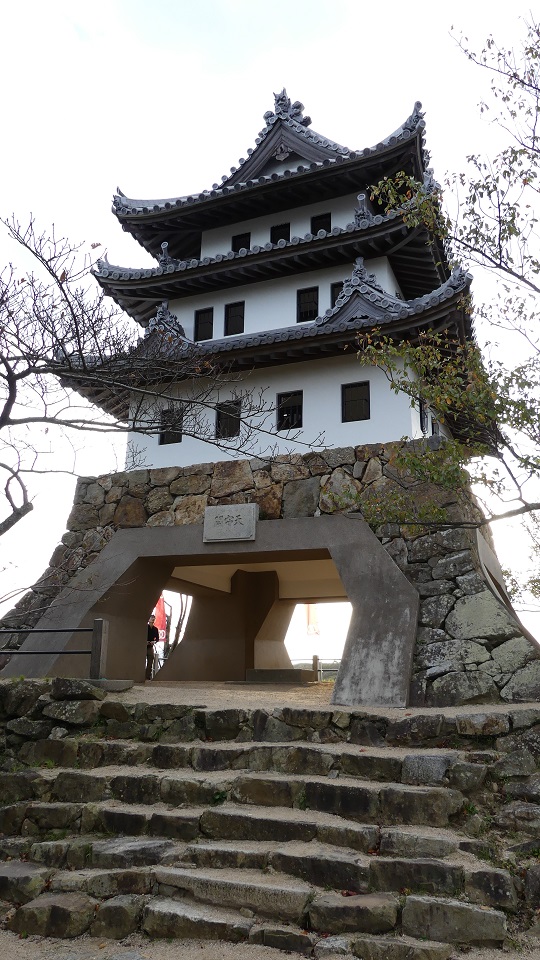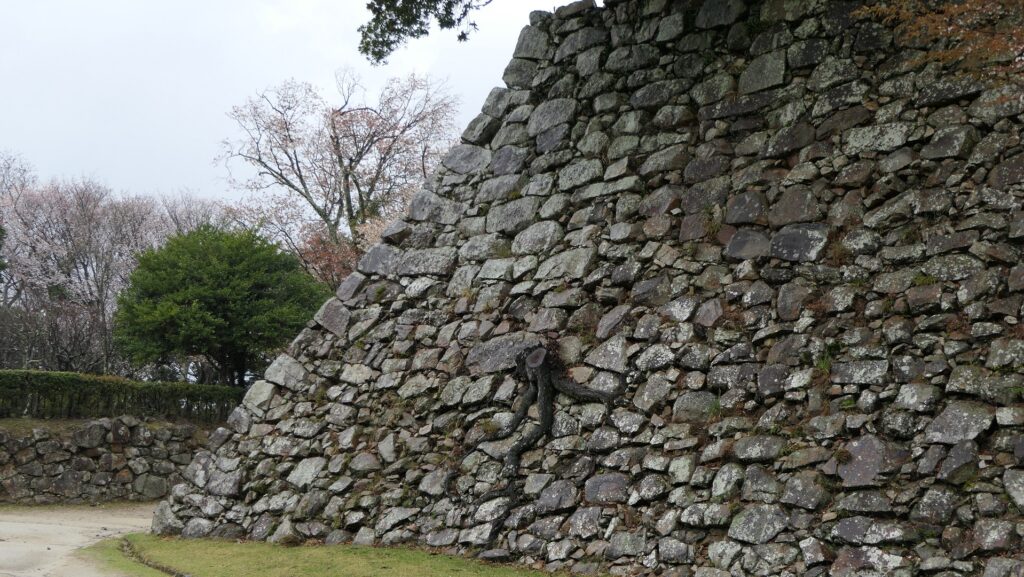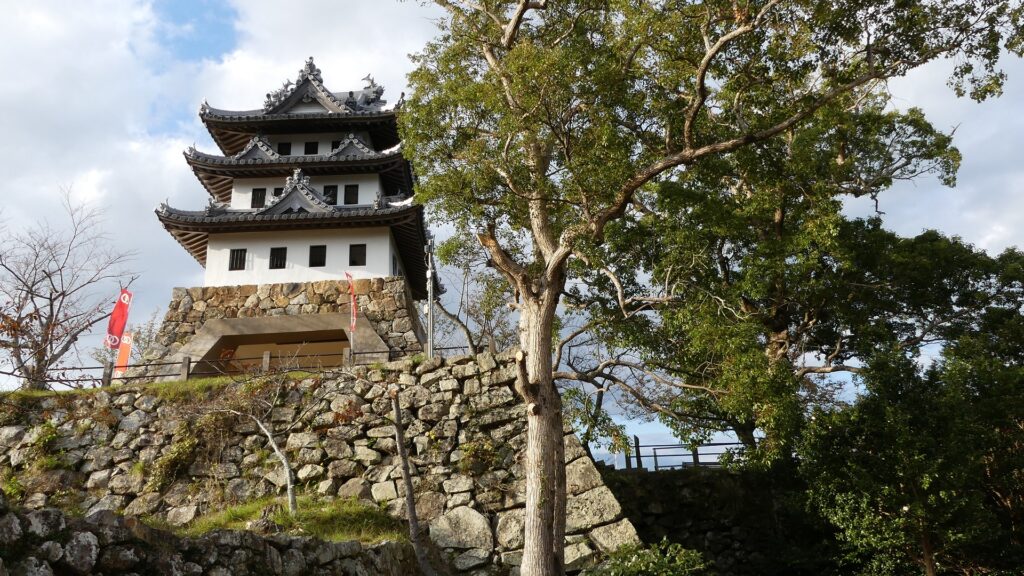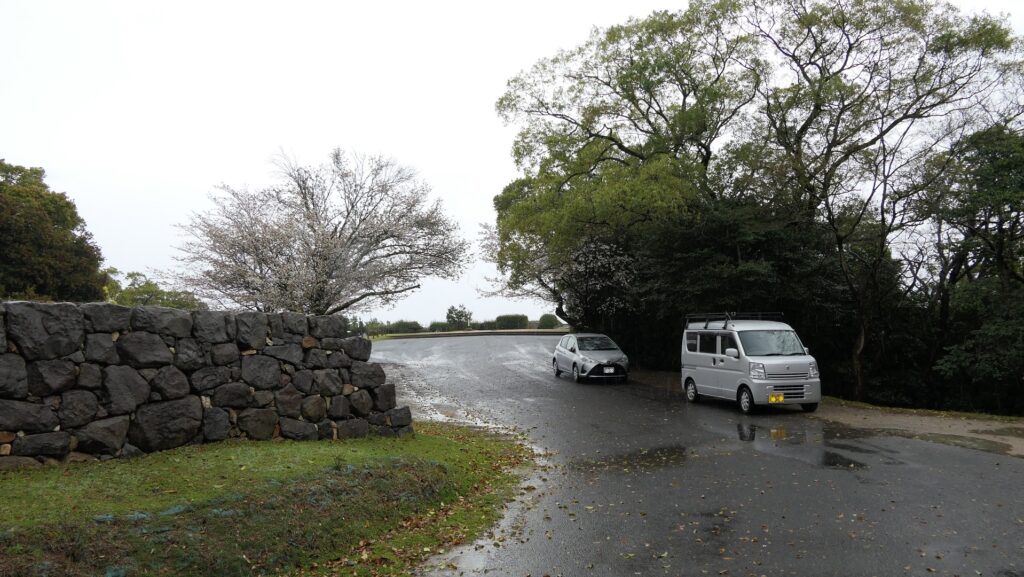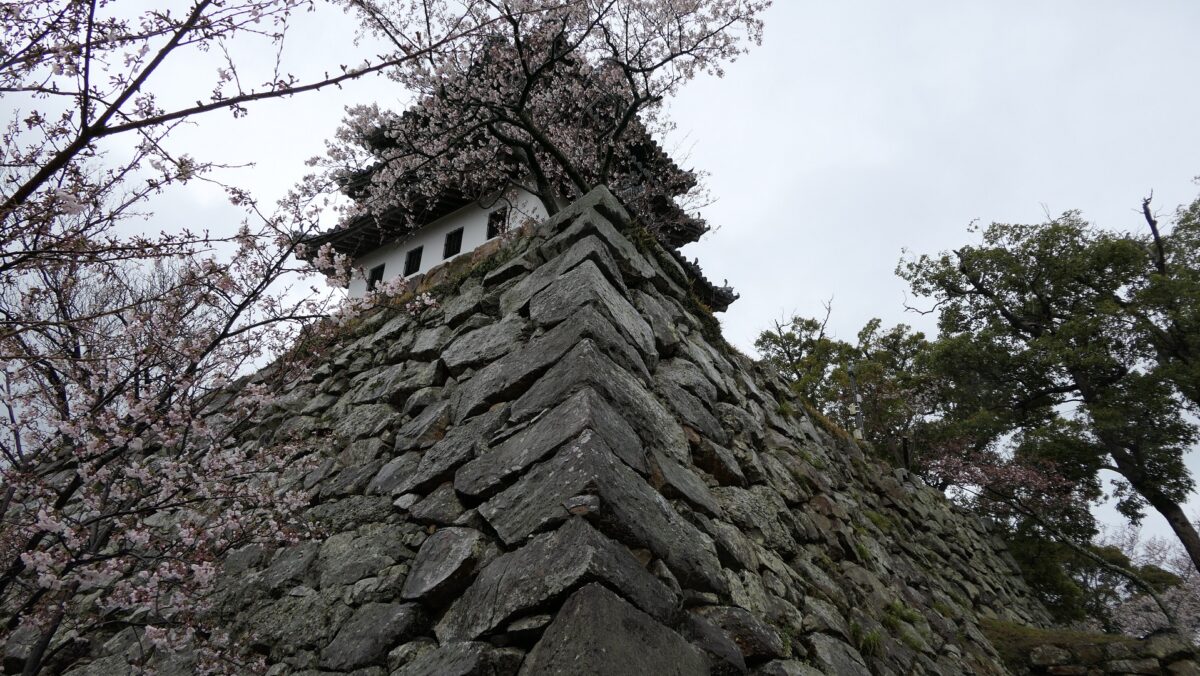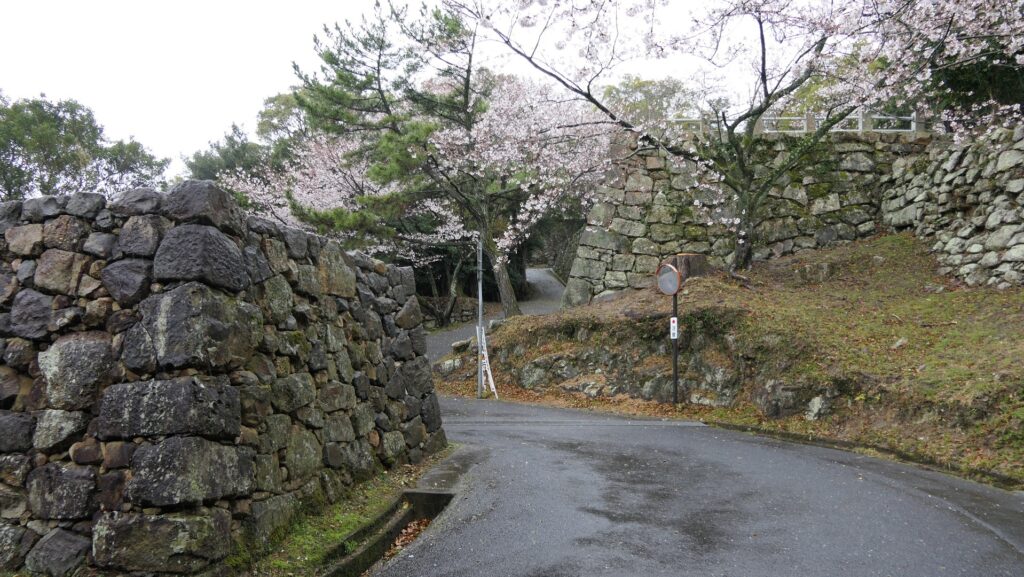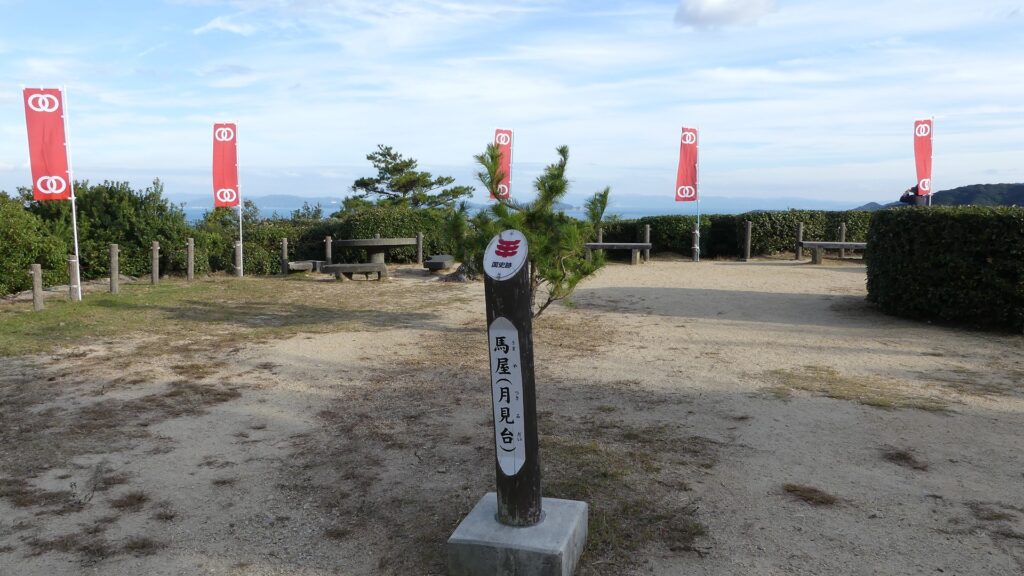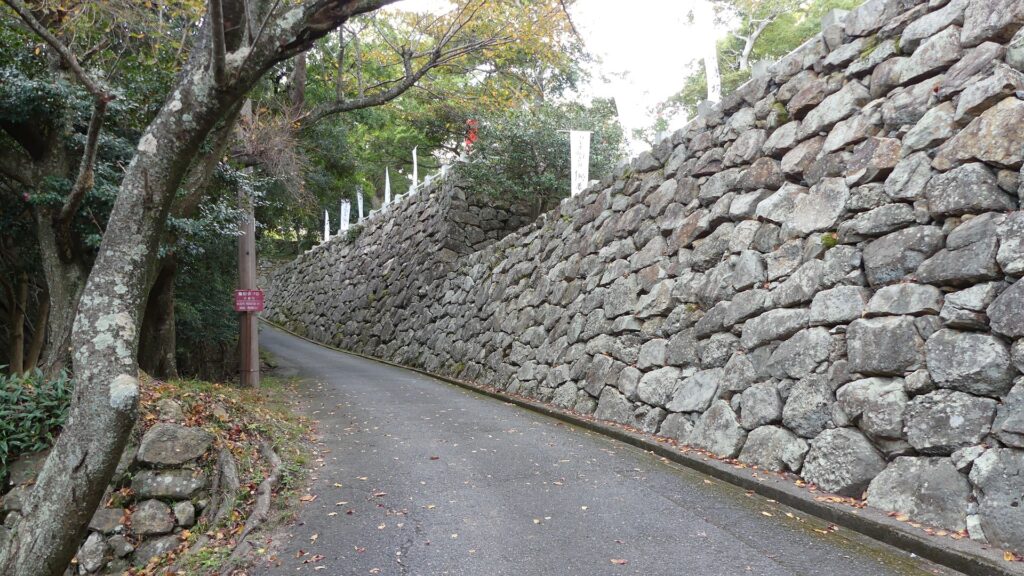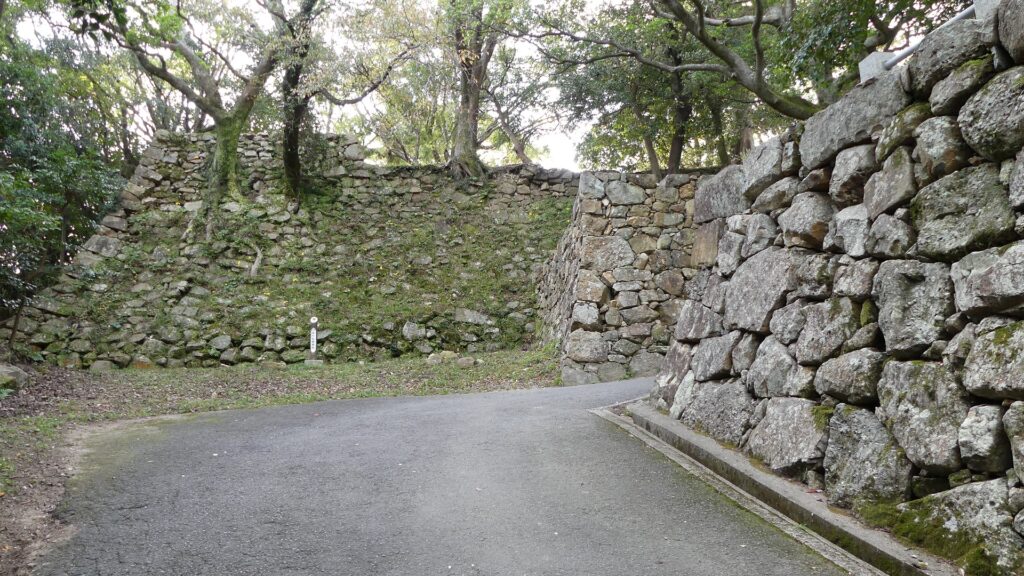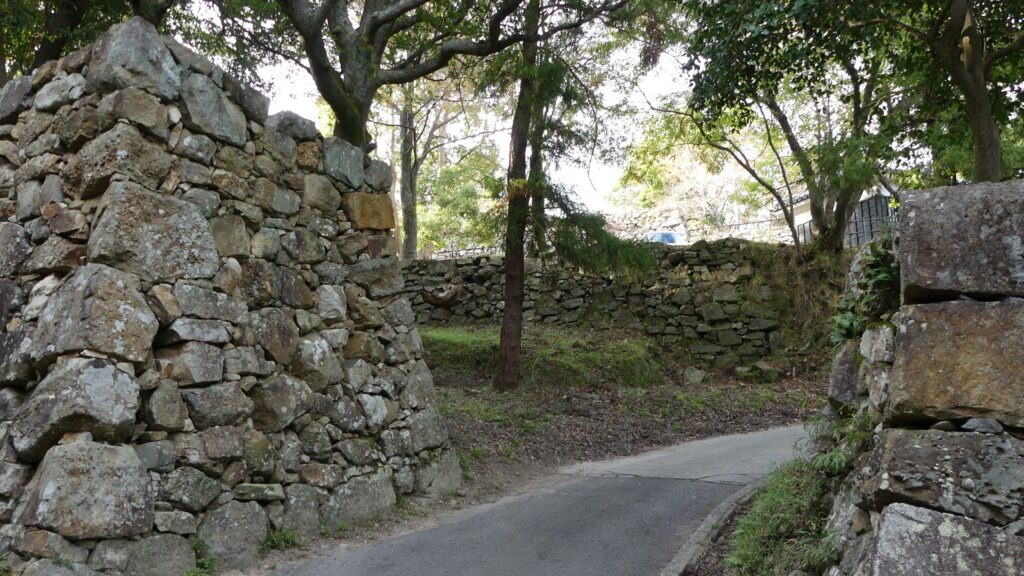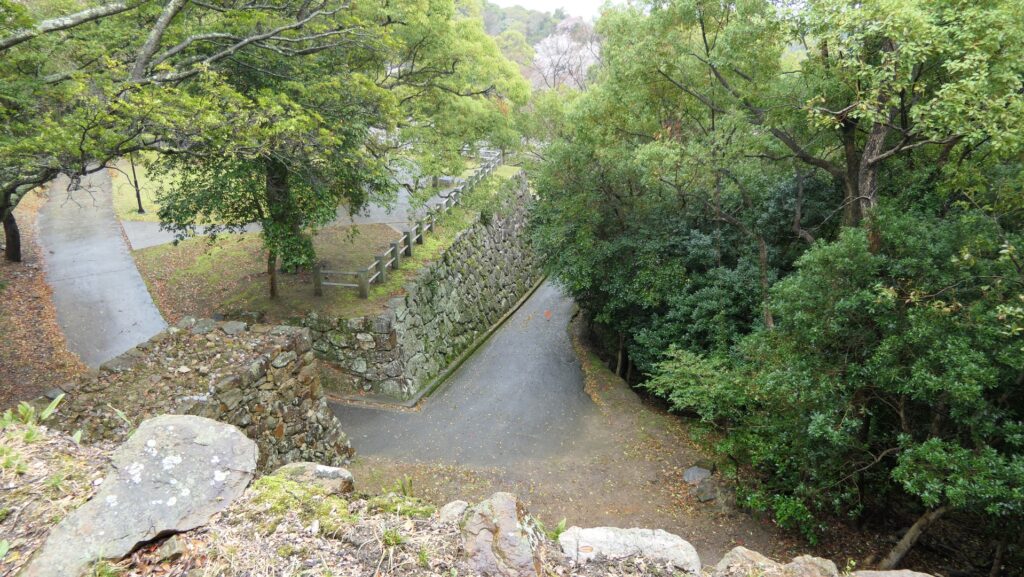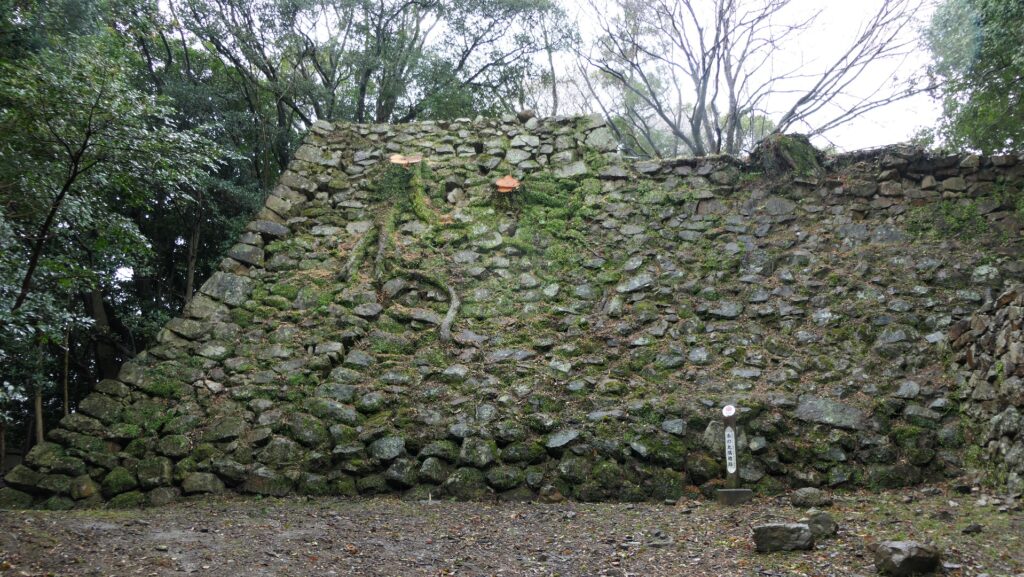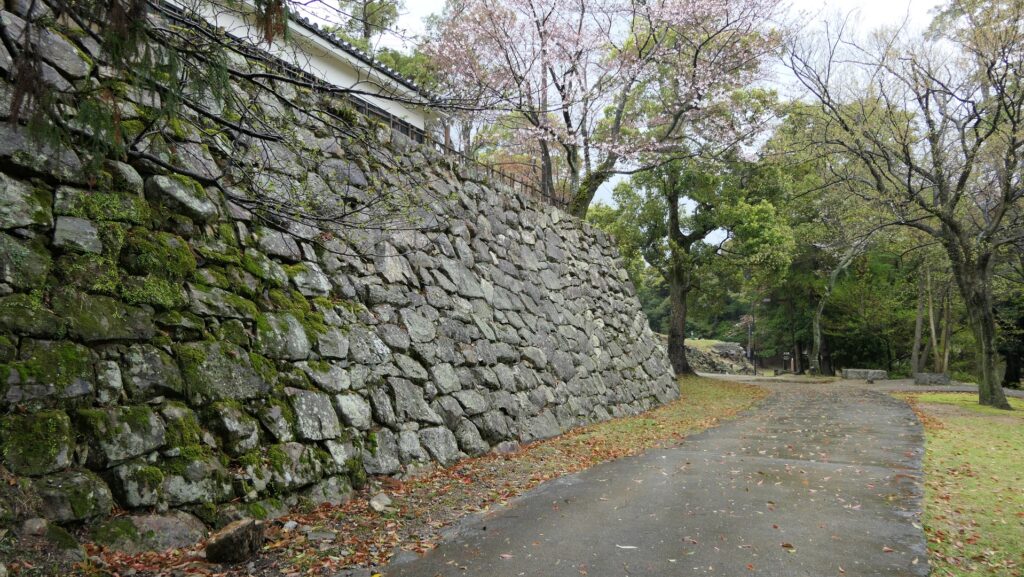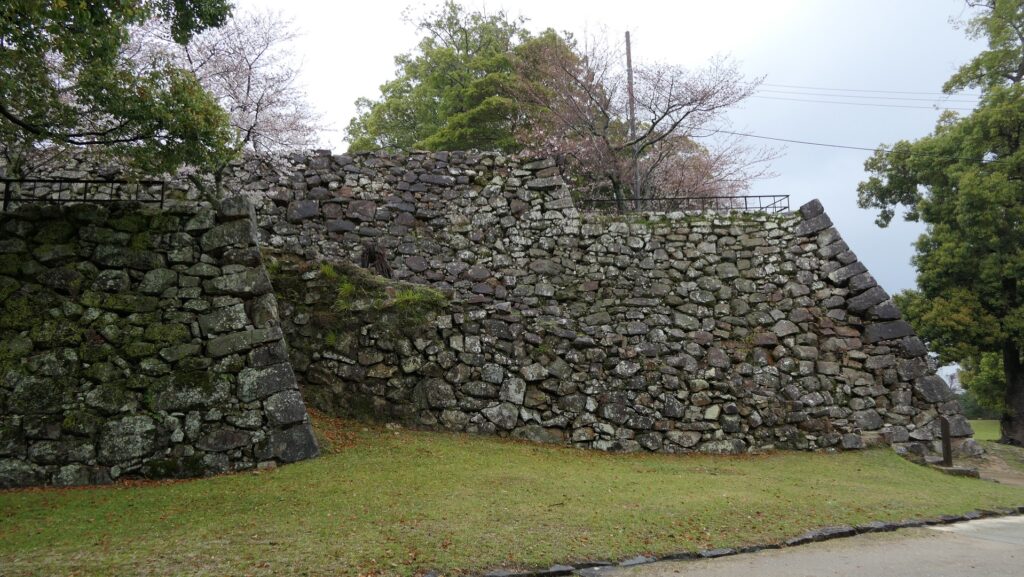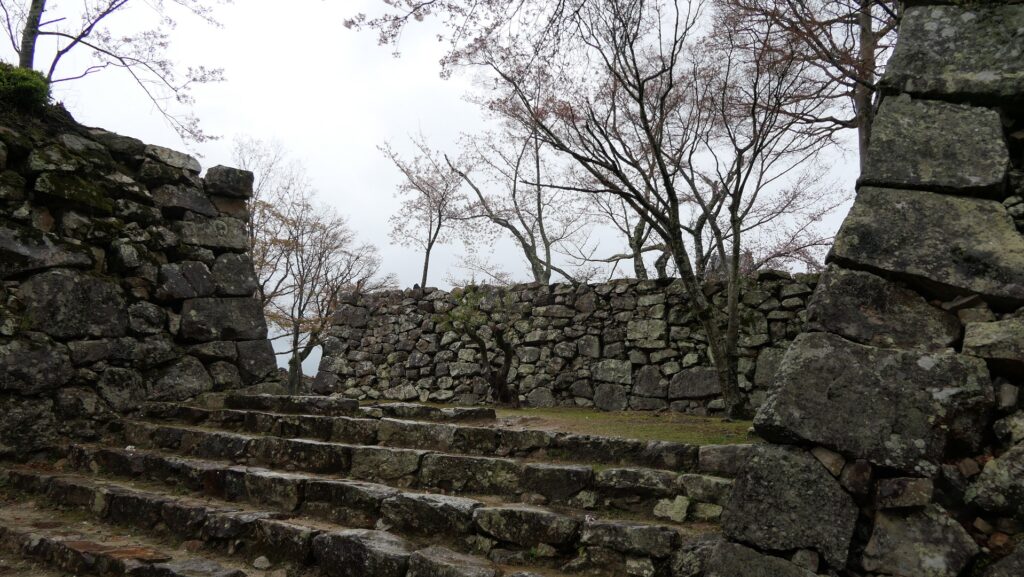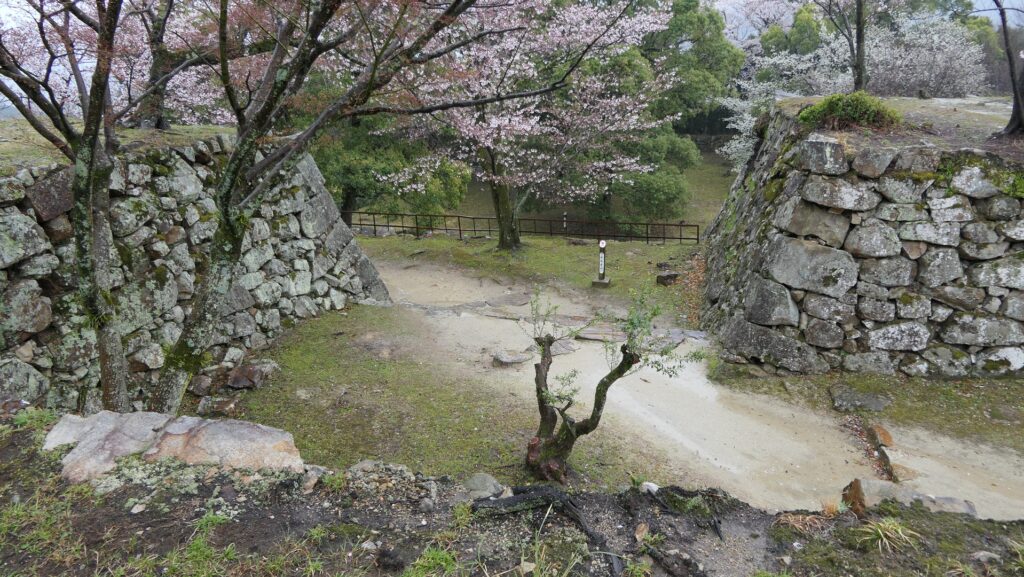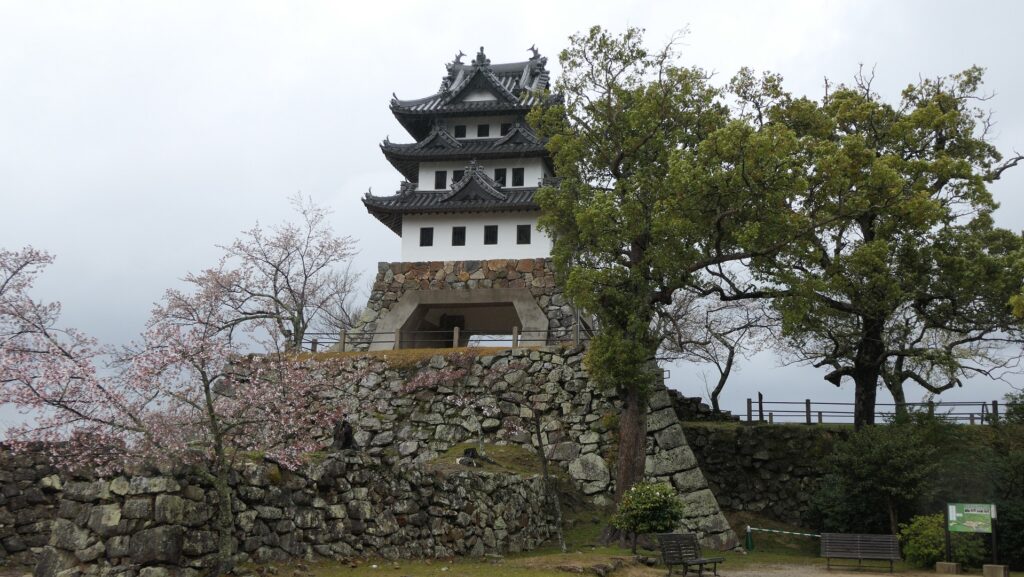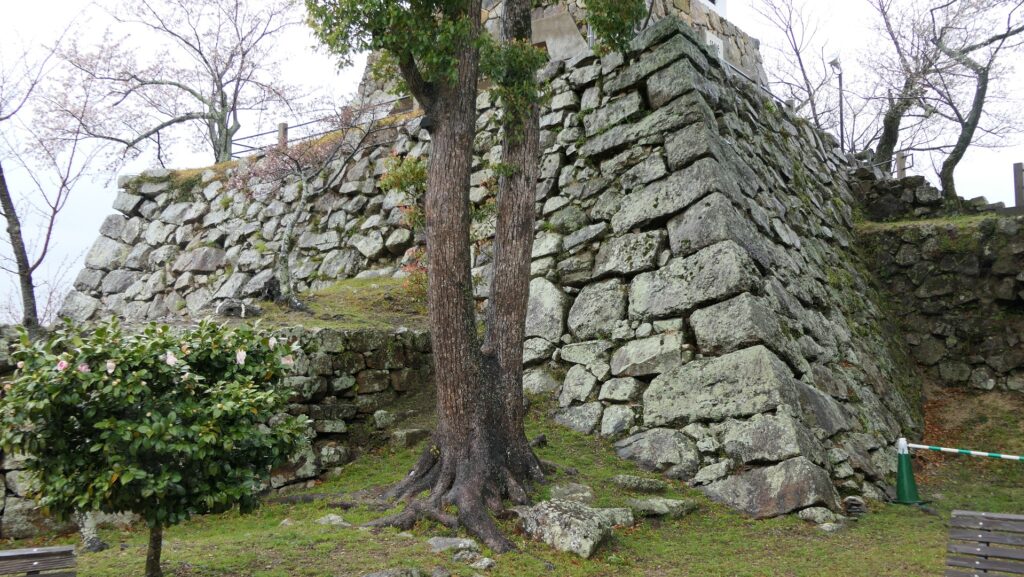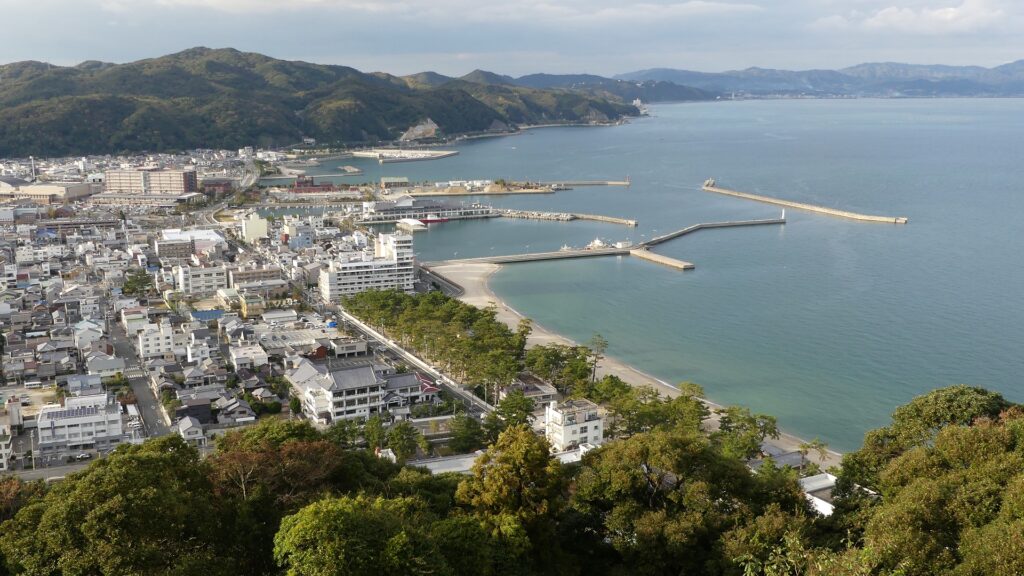Features
Rare and Beautiful Stone Walls
Now, the ruins of Tokushima Castle is open to the public as Tokushima Central Park which includes both the mountain and plain parts. Visitors typically go to the plain area first which is still surrounded by the stone walls and the Inner Moat. The stone walls of this castle are very rare and beautiful because they were piled up using stones with a dark-green striped pattern called chlorite‐schist. These stones are also known as Green stones of Awa. Moreover, some parts of stone walls included stones called piedmontite schist also known as Red Stones. The contrast of green and red in the stone walls looks more beautiful.
The aerial photo around the castle
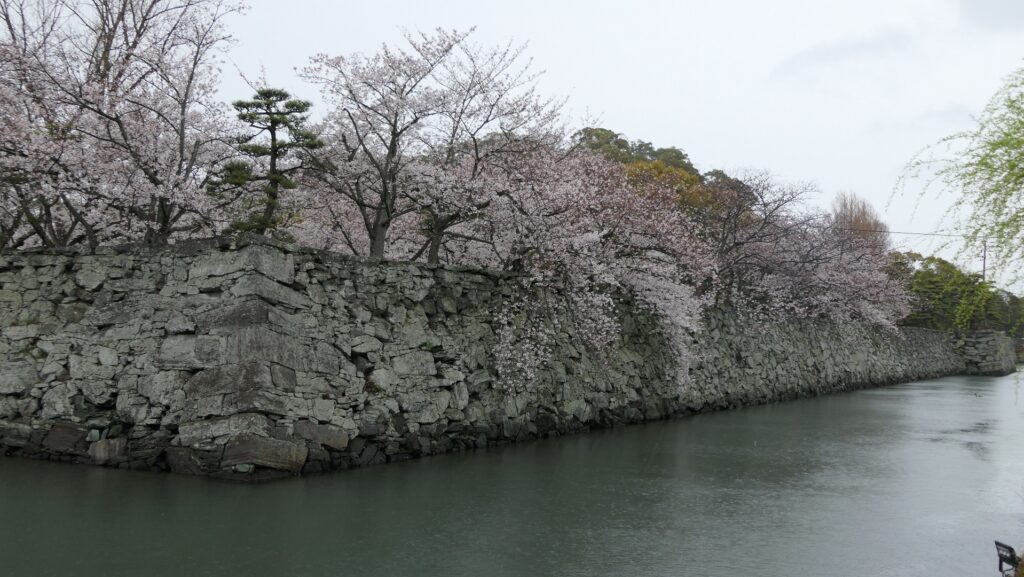
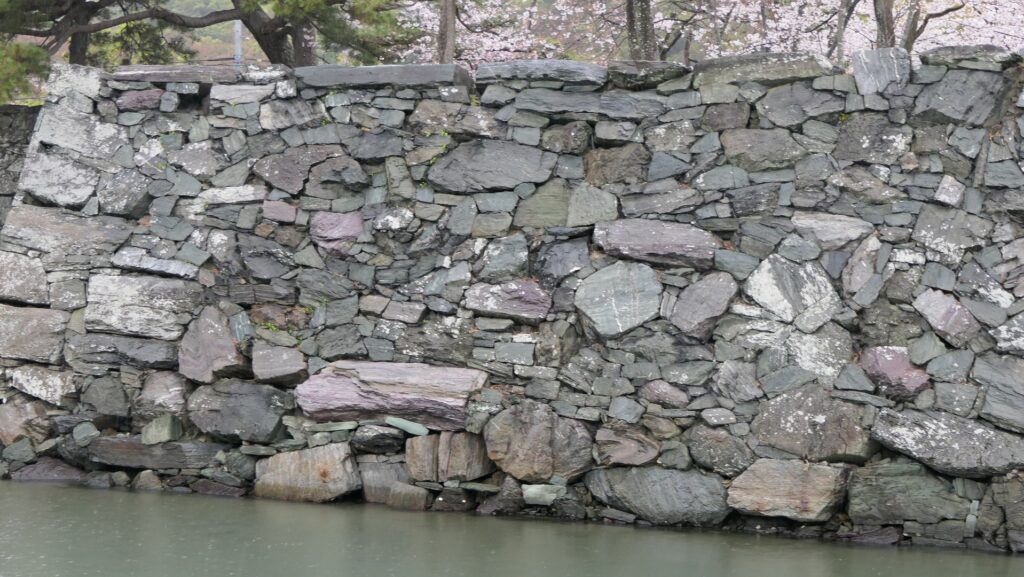
August Entrance of Castle
There are no original buildings of the castle, but only the front gate called Washi-no-mon which was restored in 1989. You can enter the center of the park behind the gate by crossing the Gejo Bridge and passing the ruins of Kuro-mon Gate. The remaining stone walls of the gate and the neighboring Taiko-yagura Turret looks great as they were recognized as the main gate. Inside the stone walls, there are several attractions worth seeing, such as the flower square, Tokushima Castle Museum, and the remaining Japanese Garden of the Main Hall which was designated as a National Scenic Beauty. You can also enjoy walking on the inside route which is surrounded by the stone walls.
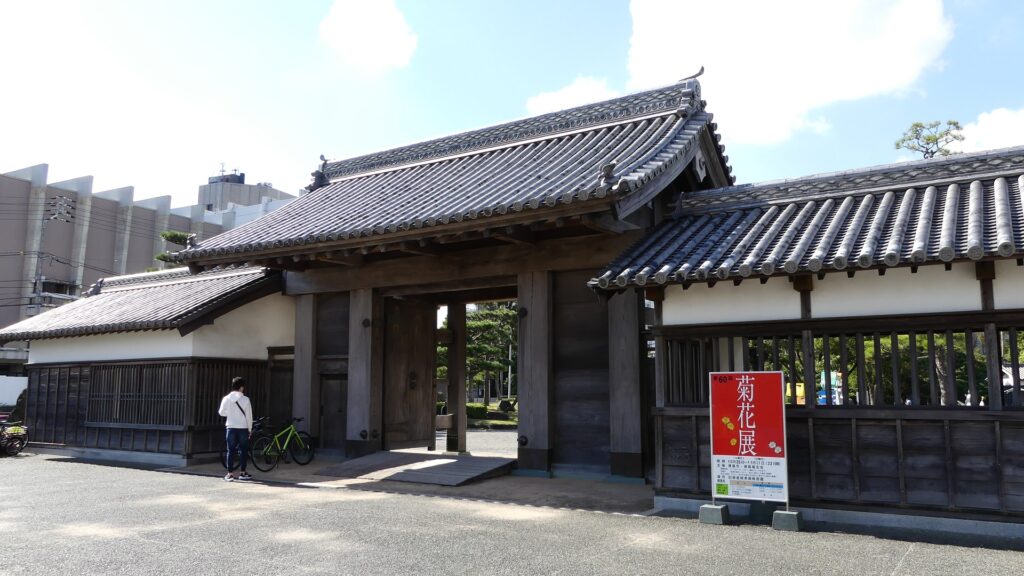
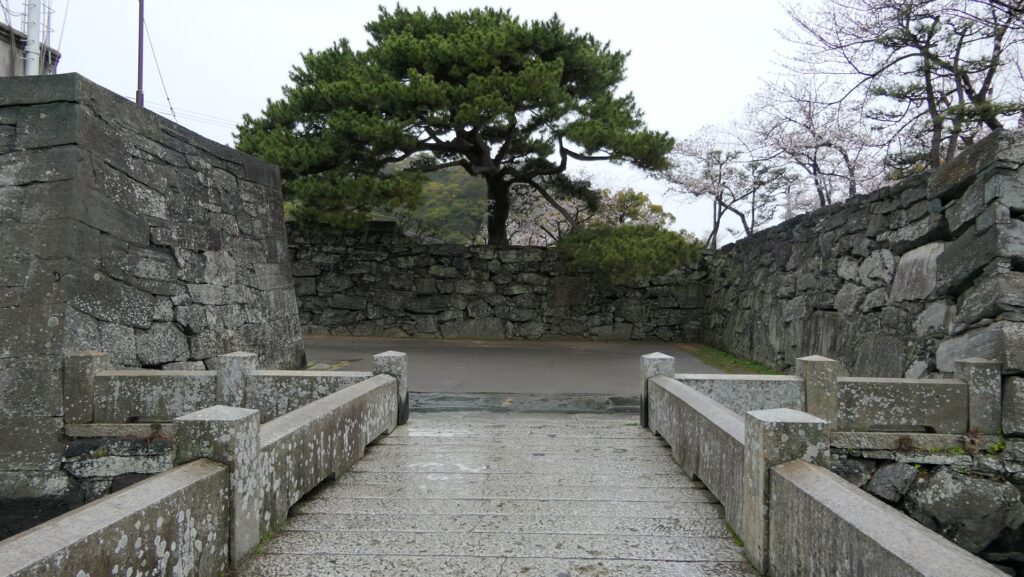

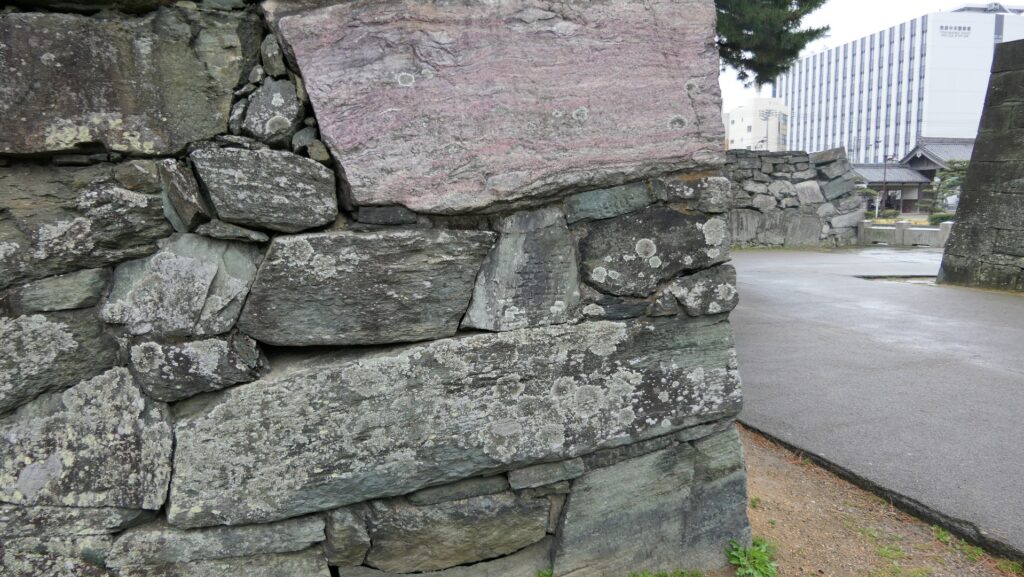
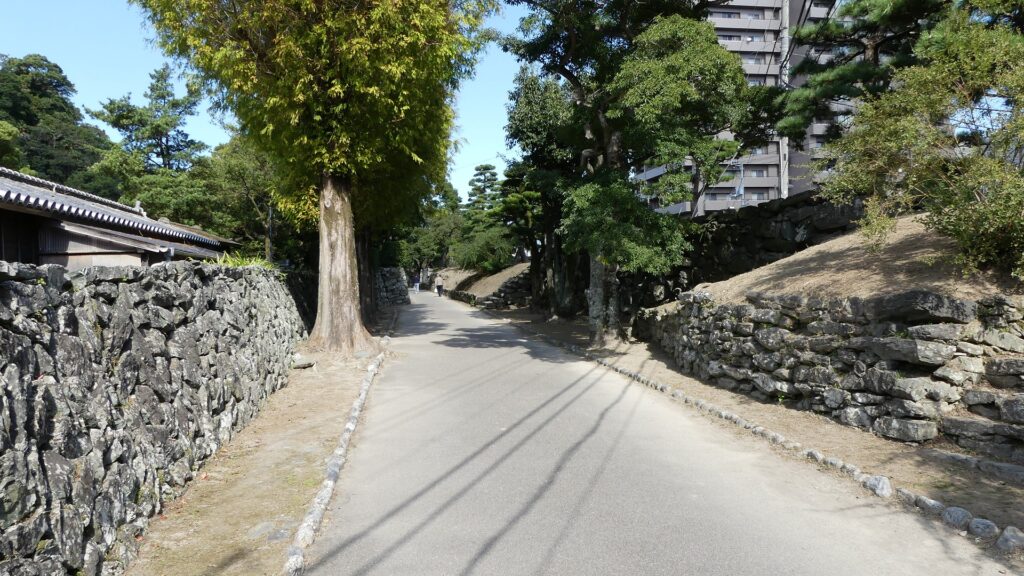
Mountain with Silent atmosphere
You can visit the mountain part as well. The mountain is now called Shiro-yama or The Castle Mountain. The route to the top of the mountain has been developed with the modern stone stairways so that visitors can climb easily. The enclosures on the mountain became empty where the signposts show the names of the enclosures and what buildings there were such as the Main Tower on the Eastern Second Enclosure. From the Main Enclosure on the top, you will see a view of Tokushima City. The ruins of Yumi-yagura Turret in the enclosure was where the first Main Tower was built. The stone walls on the mountain look much older than on the plain area. This is probably because the mountain part was built earlier than the plain part. It seems that fewer people visit the mountain now, but you can still enjoy a quiet atmosphere there.
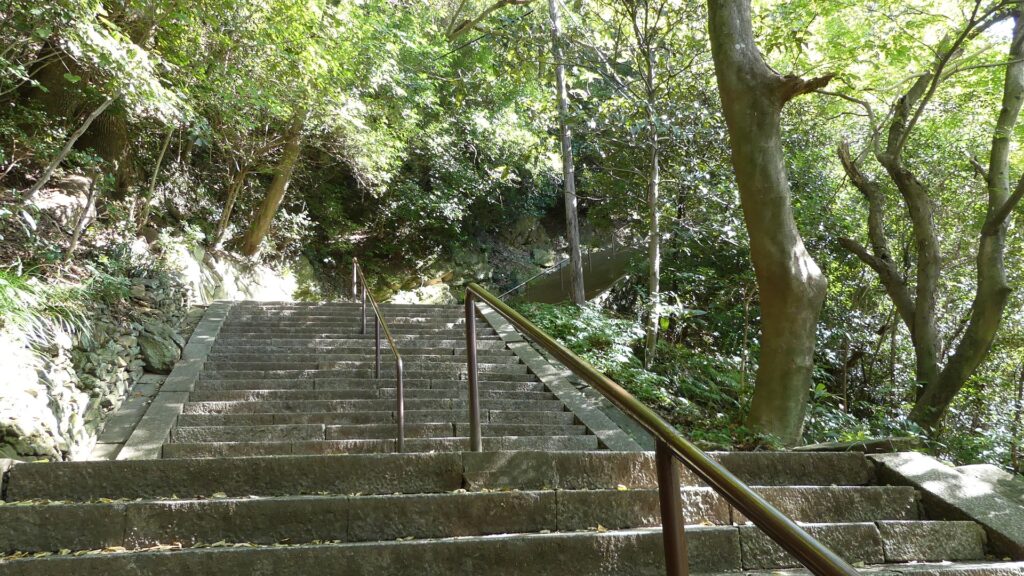

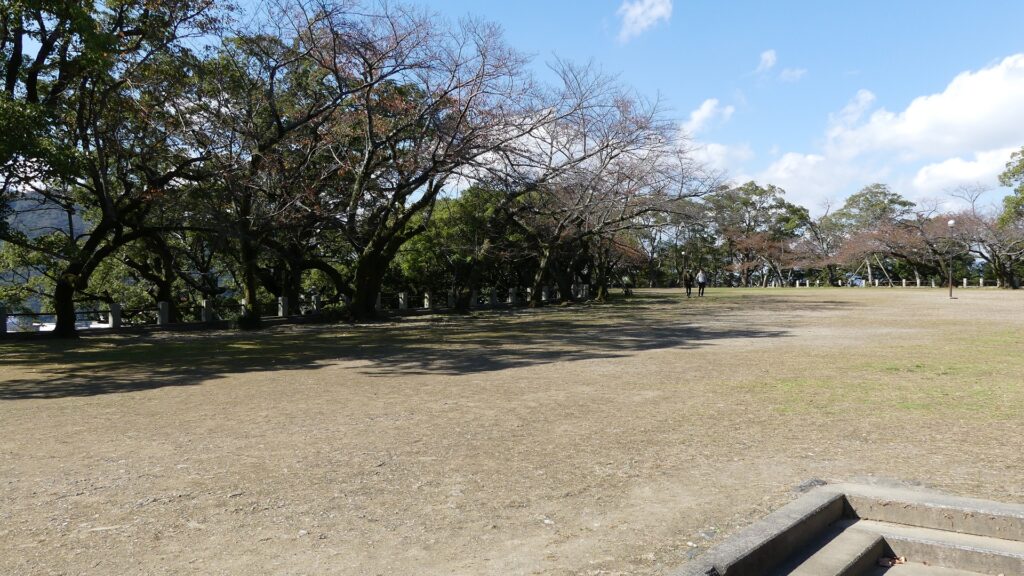
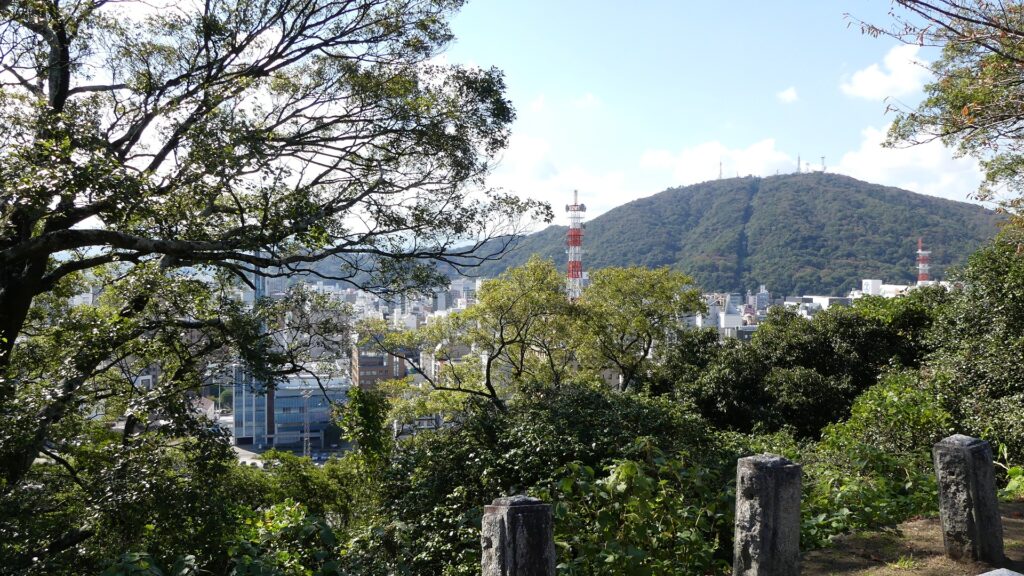
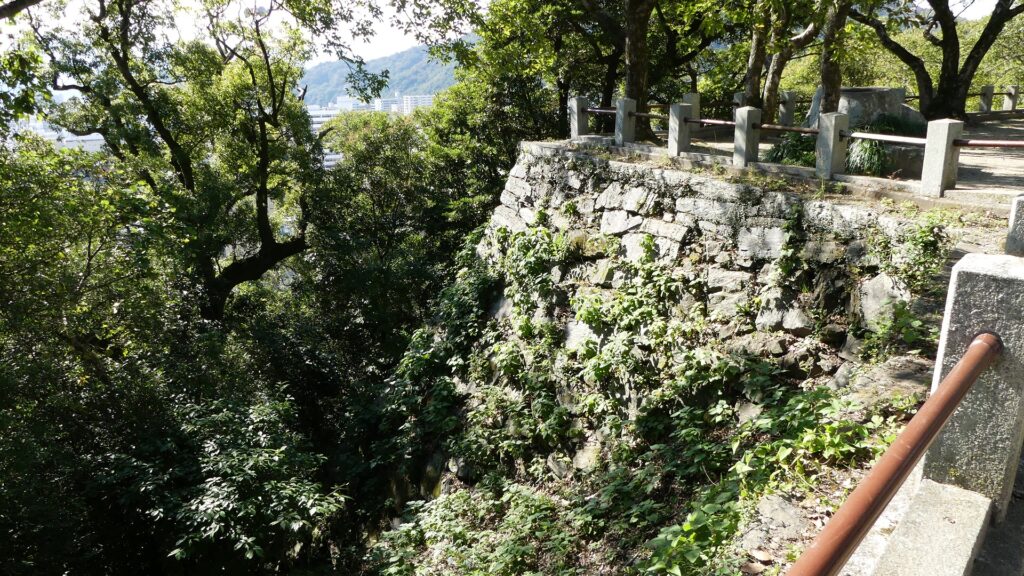
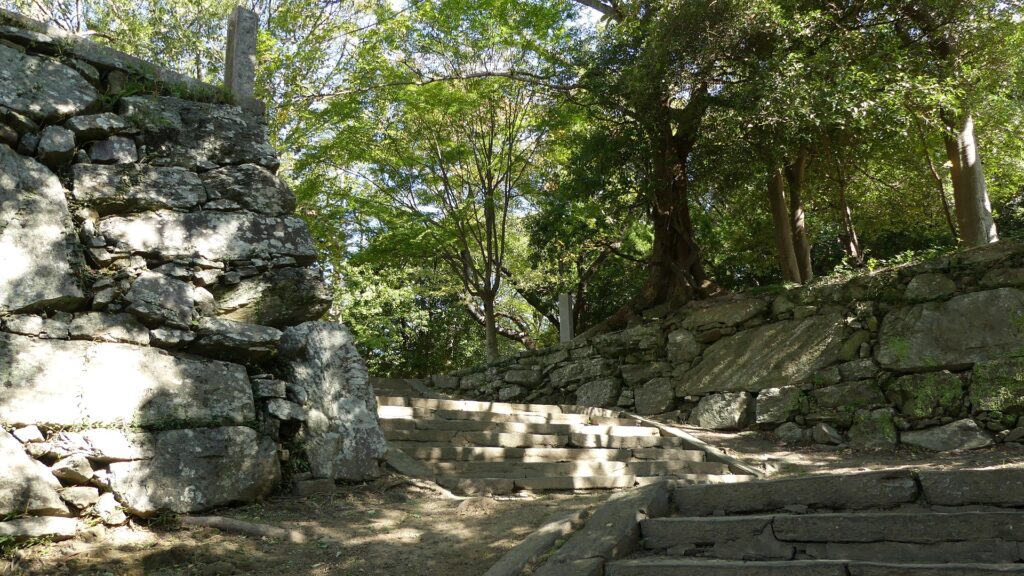
To be continued in “Tokushima Castle Part3”
Back to “Tokushima Castle Part1”

